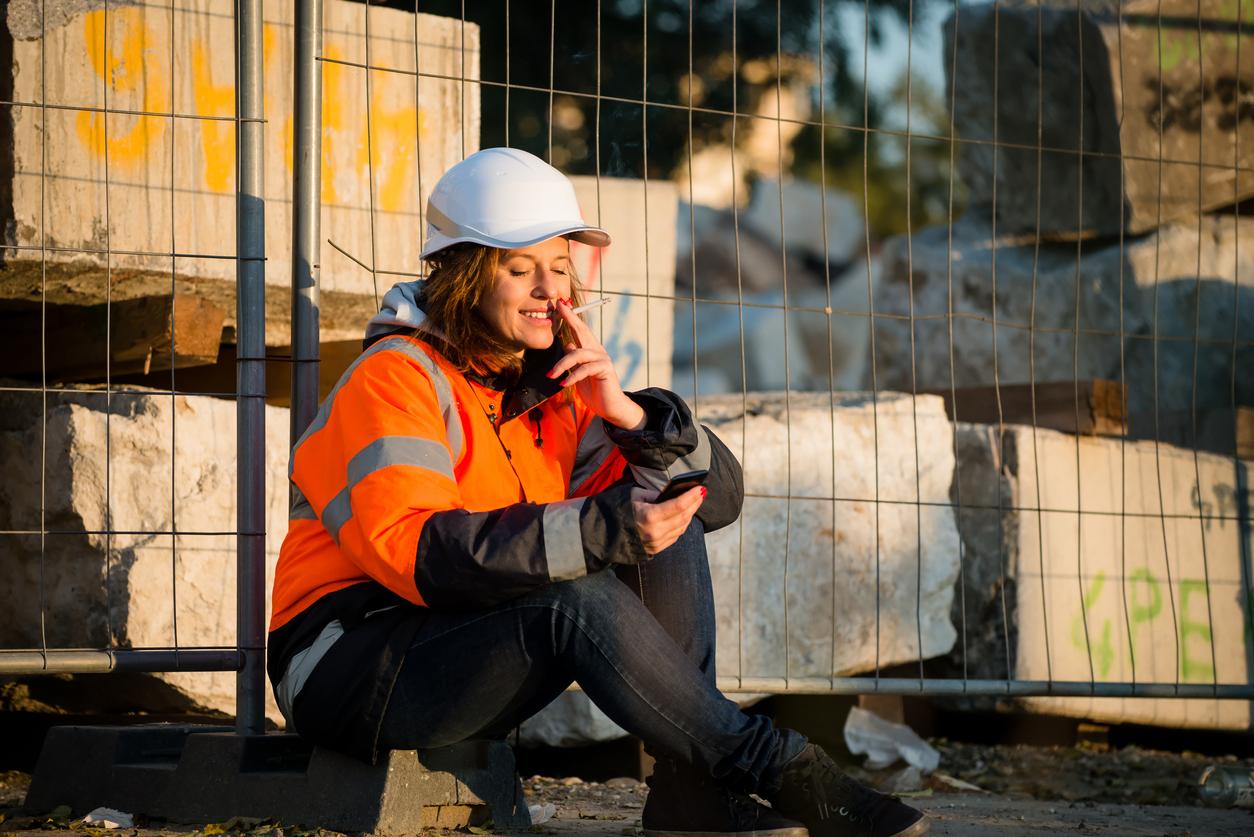One in two patients is unemployed ten years after being diagnosed with multiple sclerosis. Maintaining a professional activity is however possible, and even recommended.

“I announced my multiple sclerosis directly to my employer. »Cécile is 31 years old when she learns that she is ill. She then worked as a radiology manipulator. Ten years later, she works as a medical secretary in telework. Like her, 70 to 80% of patients with multiple sclerosis (MS) see their professional life turned upside down after diagnosis. Between sick leave, medical appointments, fatigue and flare-ups, professional activity quickly becomes an obstacle course. On the occasion of World MS Day organized on May 28, the Union for the Fight Against Multiple Sclerosis is launching an awareness campaign to fight against certain received ideas, and in particular that which would like that SEP and work are incompatible.
Half of the sick unemployed at 10 years old
In fact, only 20 to 30% of patients with multiple sclerosis keep their jobs (1). The others lose their jobs or are given another job. Most often this “reclassification” is experienced as a “downgrading” by the patients. This is the case of Cécile, who has had a bad experience with her change of post. “Going from manip ‘to secretary was difficult to accept, and it still is”, she confides in why actor. “I blame my illness a little, it took my profession away from me. “
Others are less fortunate: it is estimated that half of patients are unemployed ten years after diagnosis. “In most cases, continuing to work is possible, especially since the diagnoses are increasingly early, as are the treatments”, deplores Professor Sophie Fantoni-Quinton, occupational physician in the “occupational pathologies” department of the Lille University Hospital (North). “Not only is it possible, but it is also preferable for the quality of life,” she adds, while specifying that the conditions will vary from case to case.
Listen to Prof. Sophie Fantoni-Quinton, occupational physician at the Lille CHRU: “ The conditions will depend on the pathology, the therapeutic management, the position and the links between the occupational physician and the caregivers. “
Part-time, training, adaptation …
“If you lost your job when you are no longer medically capable, that would make sense. But people are losing their jobs when they had skills left over from their previous jobs. This means that we have not mobilized everything for these people, ”plague Professor Fantoni-Quinton. However, the layout of the station is patients’ rights. The occupational physician has “an essential role” in this battle.
There are many solutions to enable patients to reconcile multiple sclerosis and employment. Adapting the pace of work, via therapeutic part-time work or recognition of disability, is one of them. The workstation itself can be adapted to avoid patient fatigue: schedules, job requirements, degree of autonomy. For this, it is essential to obtain recognition of the status of disabled worker.
Listen to Prof. Sophie Fantoni-Quinton : ” Development is the first nuance before reclassification. If there is no comparable position in the company, any other position can be offered. But the typical pattern is disinsertion. “
Professional retraining is an option often overlooked by patients, regrets Professor Sophie Fantoni-Quinton. Cécile’s request was refused. But the solidarity of his team allowed him to continue working full time. “At work, everyone fought for me, I was not left in the closet,” she emphasizes. “A supervisor agreed to set up a post of medical secretary at home. We took a year to put this together. It has been 8 years now that I go to the hospital to look for my job once a week, and I do the rest of my home. She encourages workers with disabilities to follow her example: fight to keep a job. “I would like a lot of jobs like this to develop. You have to invest, not to stand idly by. “
|
Aid for maintaining employment Outside of occupational medicine, many associations campaign for the maintenance and return to employment of patients with multiple sclerosis. In Cantal, Association for the Gestation of Integration Services (Agesi 15) advises companies and implements solutions to optimize the workstation of the sick worker. MS houses, they will offer workshops that help patients manage their illness at work, in particular through sophrology and the layout of the workspace. |
(1) White Paper on MS (2006)
.















